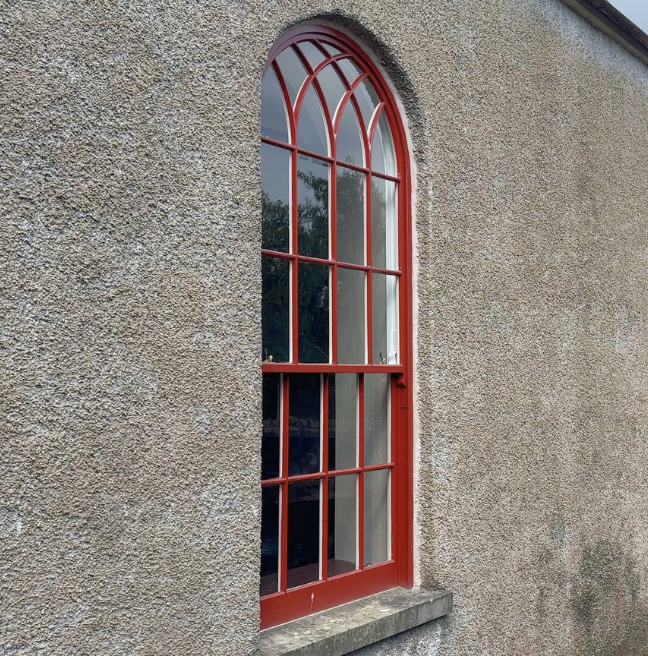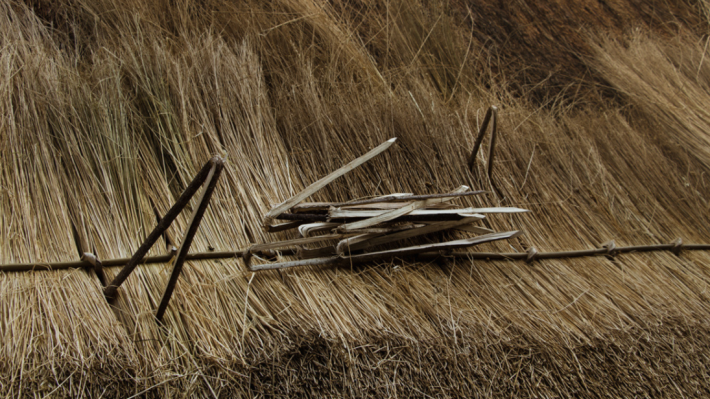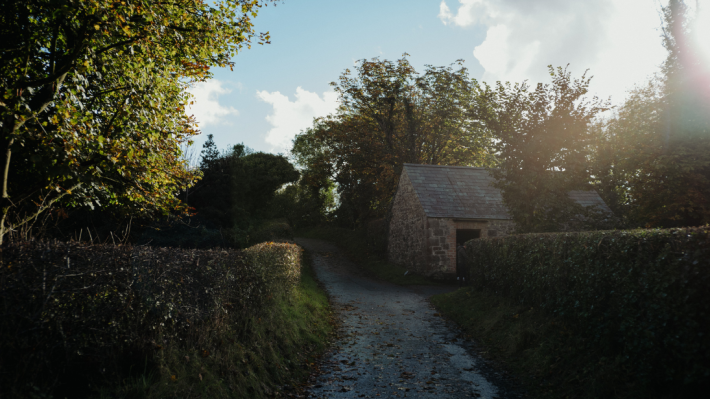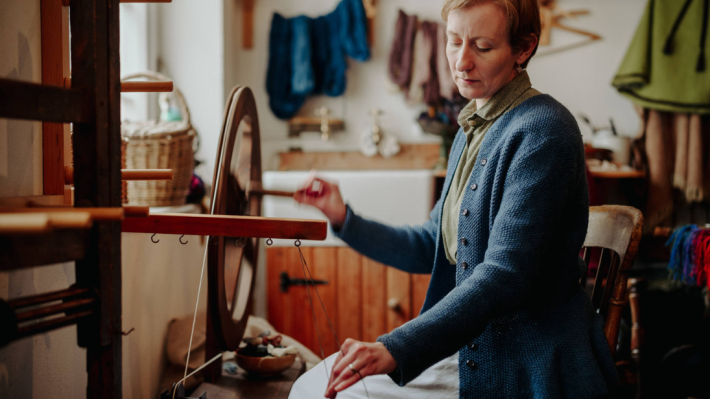
Heritage Building Conservation
Katherine McClean, Built Heritage and Capital Projects Manager, shares her work conserving the heritage buildings of the Folk Museum.
As we embark upon our exciting Reawakening plans, we have a renewed focus on conservation, maintenance and interpretation of the exhibit buildings to enhance the significance of these buildings and provide opportunities to widen engagement and involvement with our visitors.
The significance of these buildings is often in its original historic fabric, its construction, the skills and materials used but also in the stories it can tell, the quirks of the past, societal associations, and lives of the people who lived there.
Heritage Skills
Understanding our collection and what makes it important is essential for appropriately caring for our heritage. The coordination of care and maintenance of the built heritage at the museum lies with our in-house estates and facilities teams, led by our Built Heritage and Capital Projects Manager and Estates Manager in partnership.
We have a range of heritage building skills at the museum such as our heritage joiner and blacksmiths who support with the maintenance of our buildings. Over the last number of years, our craftspeople have enabled us to host heritage placement students undertaking The King’s Foundation All Ireland Heritage Skills Programme, which is key to our growth both within the museum and the wider heritage sector.

Our long term aim is to reinforce the existing team and include heritage plasterwork, roofing (including thatching) and stonemasonry skills, in the context of Reawakening, along with expansion of the general grounds and maintenance team to meet the ongoing needs of our 180 acre site.
Thatch
We have twelve thatched buildings at the Folk Museum, thatched with both Rye Straw and Flax. These natural materials are vulnerable to natural deterioration as the roofs age, but also damp, overshadowing, vegetation growth and attack by pests. Paramount to prolonging the life of the thatch is regular and ongoing maintenance, spraying and patch repairs, an ongoing challenge for our team.

This is in part why in 2022, after a number of years of patch repairs on our Old Rectory due to ongoing and extensive bird damage, we looked to another sector to help – agriculture. Commercial farms use laser systems to deter the birds away from growing crops. After some investigation, we installed a laser to deter birds from our thatched roof. A small light makes its way slowly over the roof (and adjoining roofs) in a random fashion, and to date, it has kept the birds at bay without causing harm.

Damp
As we continue to experience ever increasing rainfall and prolonged wet spells, we are thinking about adaption of our exhibit buildings where appropriate to do so. Our buildings, and more pressingly, our collections within, are vulnerable to damp and humidity.

We are currently reviewing our environmental monitoring and conservation heating systems and considering opportunities within each maintenance and conservation project to increase the capacity of gutters, install French drains to allow water to naturally and effectively drain from building footings, renew impermeable paint finishes with limewash to restore breathability, and reset ground levels to unblock and restore ventilation to, for example, under floor voids, reducing the risk of damp and timber decay.
Built Heritage Working Group
Each project we undertake is prioritised through our Built Heritage Working Group. Established at the site in 2021, the group allows Curators, Collections Care, Estates, Facilities, Education, Visitor Services and Finance to work together to plan, prioritise and coordinate maintenance and conservation projects in the context of competing pressures, funding constraints and operational requirements.

Each building project involves careful and considered scheduling of works by the estates team supported by our consultants, to ensure works are appropriate to the building fabric, the correct materials are used and the right specialist skills are employed for delivery. Each time a building is closed for work, behind the scenes, the schedule is carefully coordinated between curators, operational staff, interpretation and collections care, to afford time to decant the building, carry out the works, conserve the collections objects within and reinterpret the space before it is opened to the public again.
Reawakening the Ulster Folk Museum
As we move towards the delivery phase of the Reawakening project, key to our reimaging is the reintroduction of two buildings with huge potential that have been in recent years lost from the visitor journey – Straid Corn Mill and Gorticashel Flax Mill. We are currently drawing up schemes of repair and conservation works for each of these buildings in order to consolidate and weatherproof the external building fabric in the first instance.

While the challenges around funding for delivery of these projects will likely continue in the current climate, we will soon be embarking on feasibility discussions through the Built Heritage Working Group to agree the future use and interpretation of these – an exciting project ahead!
Dive Deeper
Heritage Skills
Learn more about the heritage skills that can be found at the Ulster Folk Museum.
Reawakening the Ulster Folk Museum
An exciting project to revive the museum's role in today's society, helping to promote ways of living that are in harmony with both nature and one's neighbour.
Meet our Makers
Running all year round, the daily programme at the Folk Museum follows the rhythms and traditions of Ulster’s seasonal calendar.








